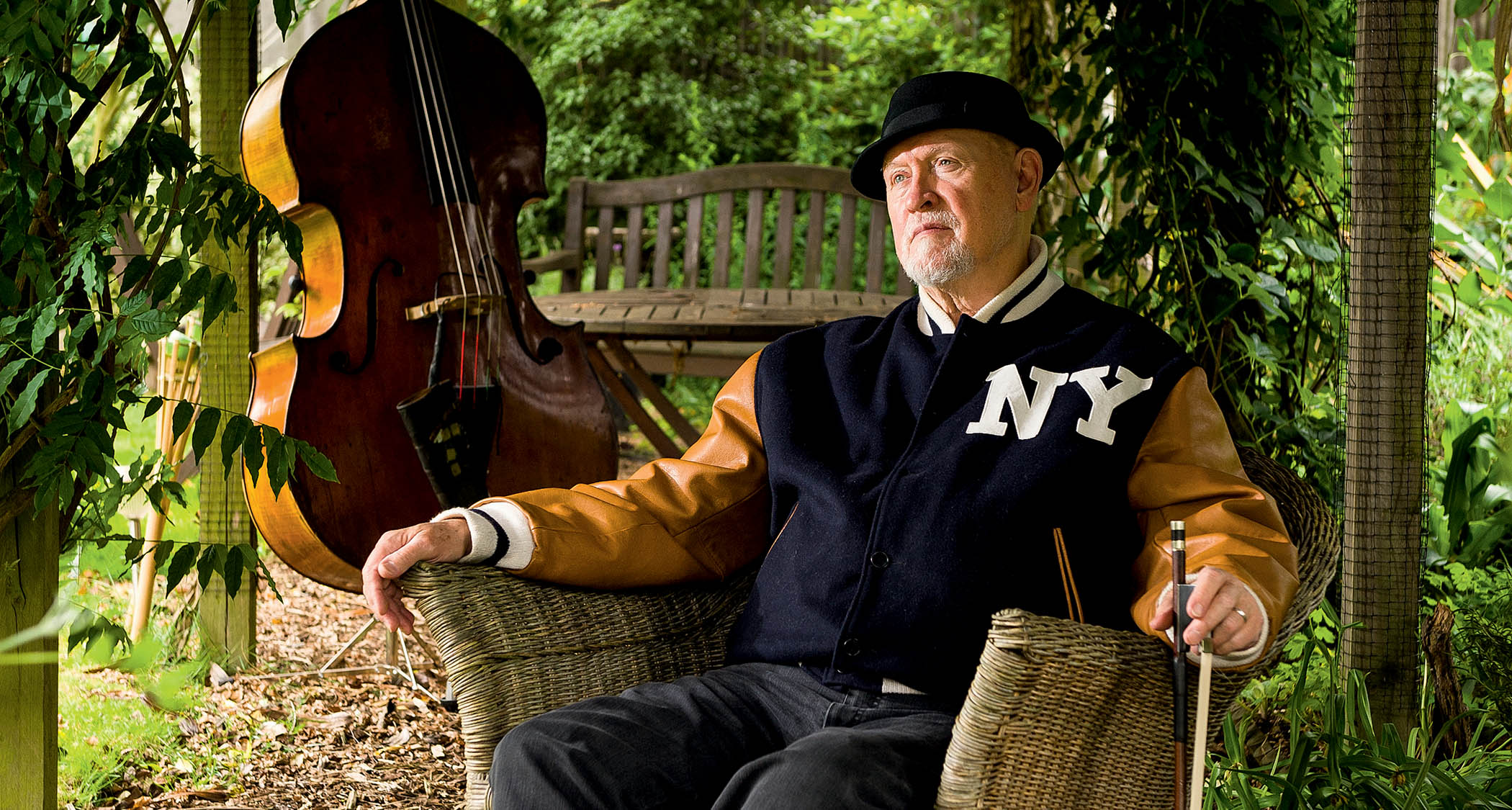Best headphone amps for guitar 2025: silent practice solutions
You don’t need to sacrifice tone to practice quietly with my expert pick of the best headphone amps for guitar players

For most of us, cranking up a tube guitar amp and letting rip with our favorite guitar is rarely something we can do, particularly at home. You still need to practice your licks and riffs though, so when inspiration strikes late at night or you've got to rehearse for an upcoming gig without disturbing others, you need one of the best headphones amps for guitar.
I've reviewed a bunch of guitar headphone amps over the past couple of years, including many of the products in this guide and as a guitarist of over 20 years, I can honestly say they're a game-changing addition to any player's arsenal. I've picked a range of different options for you hear, from units that require a dedicated pair of guitar amp headphones, to self-contained units that combine amp and headphones into one.
If you want the best overall solution, then I recommend you pick up the Fender Mustang Micro Plus. It's reasonably priced, packed full of great tones, and super easy to use thanks to the addition of a smartphone app. You will need a separate pair of headphones however. If you want an all-in-one solution, then have a look at the Positive Grid Spark Neo, which are an amazing sounding pair of headphones with amp and effects models built into them.
If you're new to headphone amps for guitar, then I've put together a how to choose section which will take you through the buying process. I've also curated a comprehensive FAQs section, which answers all the most common questions I get asked about these handy devices, as well as a glossary of key terms to help you break down all the terminology in this guide.
- On the hunt for guitar gear savings this Black Friday? Shop our handpicked selection of the best Black Friday guitar deals.
My top picks

The original Mustang Micro set the bar for headphone amps for guitar, and the Mustang Micro Plus improves on the original in nearly every single way. A handy screen, more amp and effects models, a companion app, and an onboard tuner make sure the Mustang Micro Plus retains the crown as the best headphone amp for guitar.
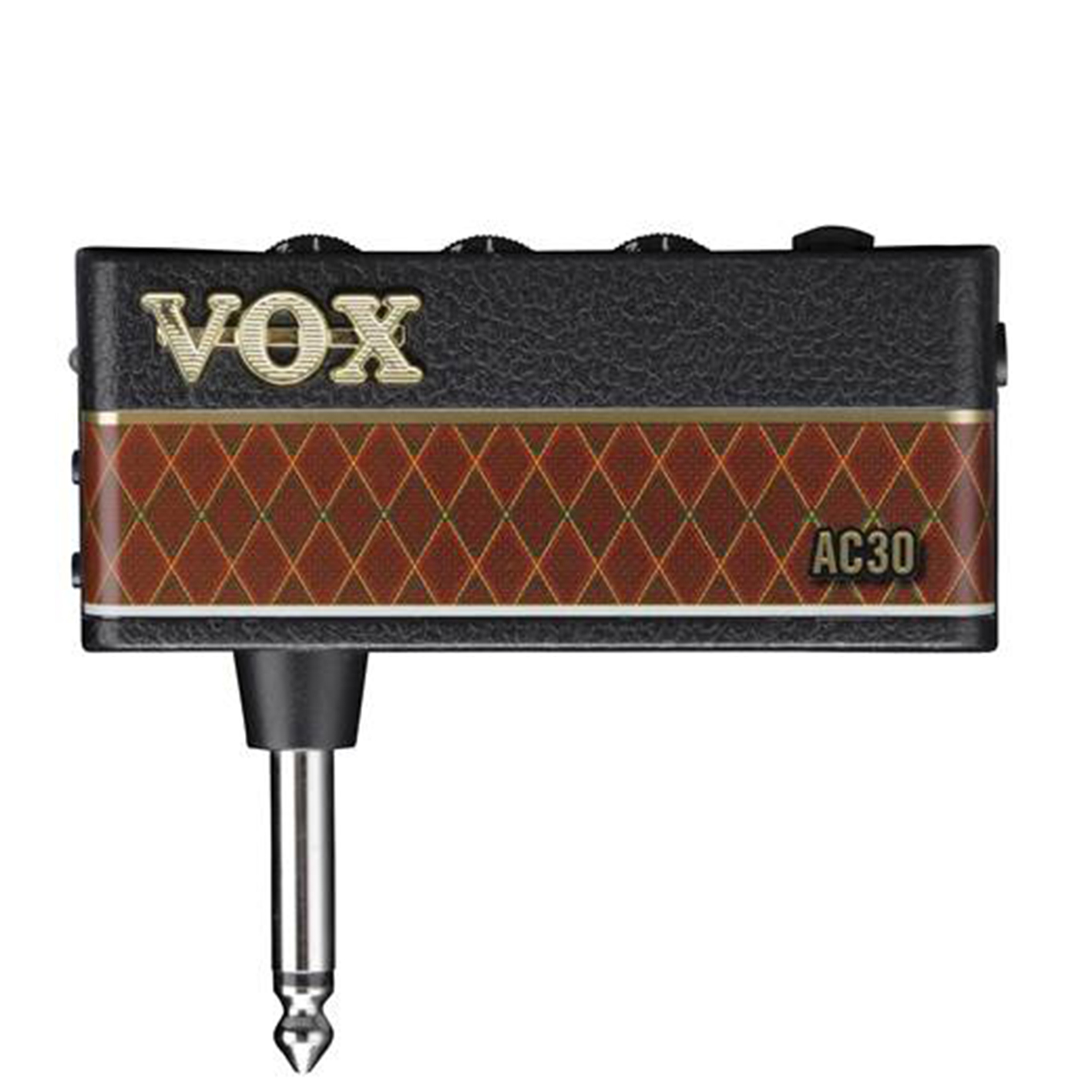
Giving you all analog guitar tones at an ultra-low price, the Vox amPlug 3 AC30 is the perfect silent practice companion for guitarists on a budget. Coming around the $/£50 mark, it's superb value yet delivers an uncannily accurate representation of Vox's famous tube amp.
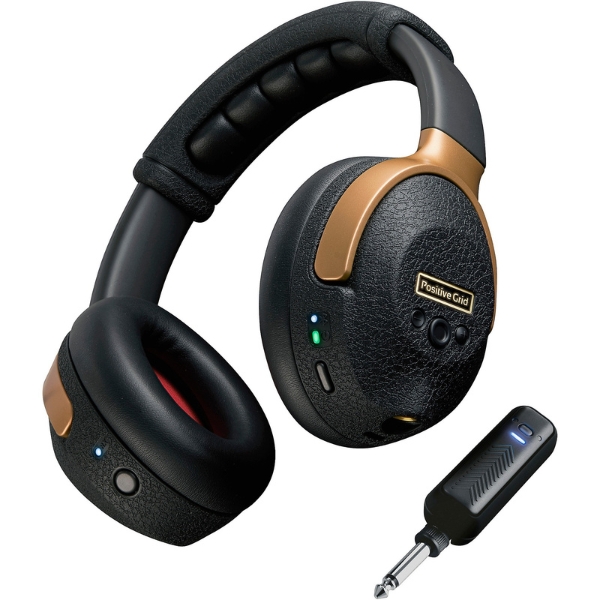
Combing both headphones and guitar amp, the Positive Grid Spark Neo is a crazily good way of practicing your skills silently. With a huge 43 amp models and 33 effects models, it's got pretty much any tone you can think of.

It only replicates a single amp tone, but the beauty of the Earthquaker Devices lies in its simplicity. Just place at the end of your pedalboard, add headphones, and you've got a way to practice in silence with all your favorite pedals.
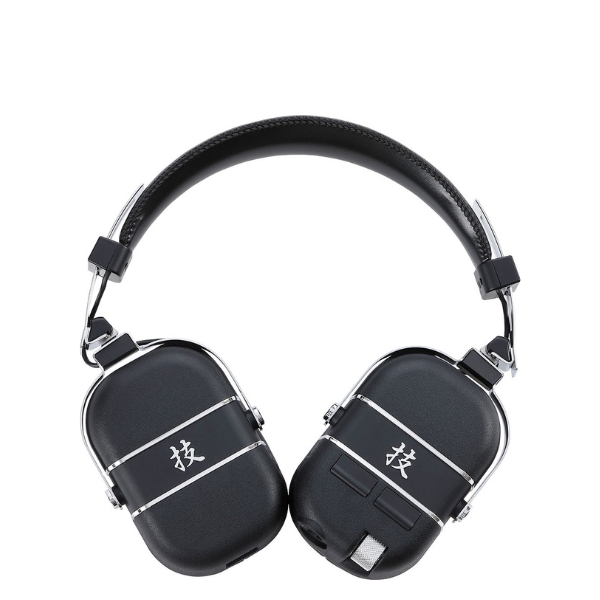
Most of the headphone amps for guitar on this list are pretty cheap, but not so with the Boss Waza-Air, which combines headphones and an amp into one unit. Delivering high-fidelity tones that take advantage of spatial technology, there's nothing else quite like them on the market at the moment.
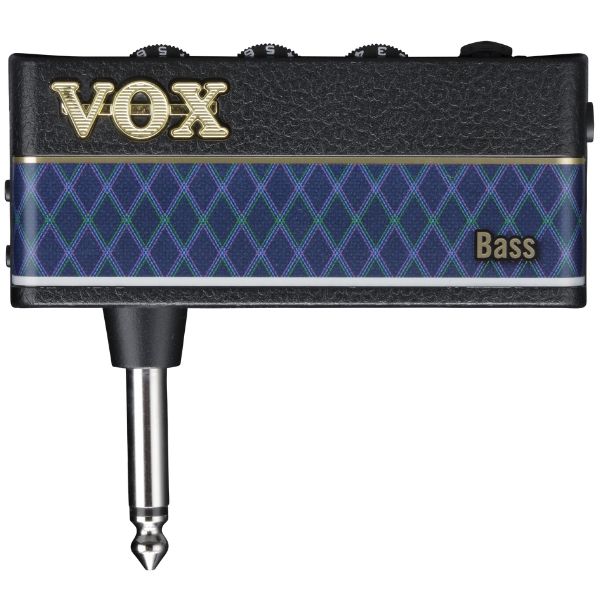
For bass guitarists, the Vox amPlug 3 Bass is an excellent option that's dedicated to bass guitarists. It's really simple to use, and even includes built in rhythms that you can play along to and help hone those rhythm chops.
Best overall
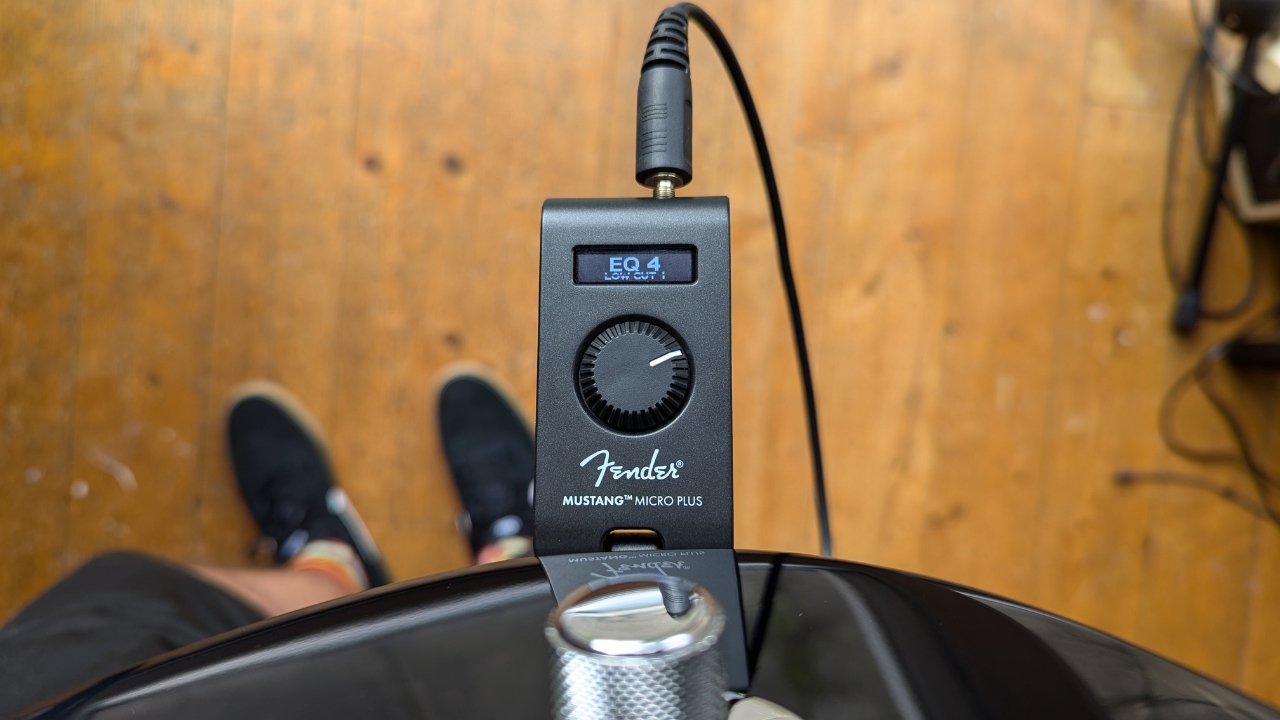
Specifications
Reasons to buy
Reasons to avoid
✅ Buy if you want a wide range of sounds and effects: This is one of the most tone-packed headphone amps available today with 25 amps and 25 effects.
❌ Avoid if you're playing bass or drop-tuned guitars: In our tests, we noticed it has a tendency to get overloaded when using low-tuned instruments at higher volumes.
Sounds: ★★★★½
Effects: ★★★★★
Build quality: ★★★★½
Overall: ★★★★½
With the new Fender Mustang Micro Plus, the big 'F' has really knocked it out of the park when it comes to headphone amps for guitar. Packing in a huge array of updates it's absolutely cemented its place as the best guitar headphone amp in the world today.
With 25 amp and 25 effects models, you're spoiled for choice with this compact tone generator. Whether it's classic Fender cleans or high-gain metal tones the Mustang Micro Plus can handle them all. The effects deliver superb high-quality sound and there's plenty of choice that will cover a huge array of styles and sounds.
The addition of a companion app takes the Mustang Micro Plus to a whole new level, allowing you to finely tune your amp tones, which you'd expect on a much larger modeling amp. A built-in tuner usable via the screen adds some versatility if you're away from your phone, and its ability to be used as an audio interface with your phone or laptop thanks to the USB-C connection makes it undoubtedly the most fully features headphone amp for guitar on the market.

"A few niggles aside, the Fender Mustang Micro Plus is very much the upgrade that was needed for one of the most popular headphone amps for guitar. The addition of a small screen, app compatibility, and the ability to save presets makes it a worthwhile practice companion that costs relatively little.."
Read more: Fender Mustang Micro Plus review
Best budget

Specifications
Reasons to buy
Reasons to avoid
✅ Buy if you want a brilliant amp tone on a budget: This newly-updated unit helps authentically evoke the tube-like tones of that classic amp.
❌ Avoid if you want a Bluetooth connection for streaming tracks: If you want to play along to tracks from your phone or tablet, your only option is an aux cable.
Sounds: ★★★★☆
Effects: ★★★½
Build quality: ★★★★½
Overall: ★★★★☆
The Vox amPlug has long been a favorite of players seeking to beam the legendary sound of one of the best Vox amps of all time directly into their ears – and we're happy to report that the new version is even better than the previous iteration that featured in this guide.
The third generation of amPlug still delivers the same all-analog tone we've come to expect from the pint-sized practice companion but in a sleeker format that feels refreshed and rejuvenated. In our glowing review, we praised the headphone amp's authentic tube-like tones, which perfectly evoked the spirit of the '60s amp from which it draws inspiration.
If we had one complaint, it would be that this unit doesn't have built-in Bluetooth or a rechargeable battery like many of its competitors.
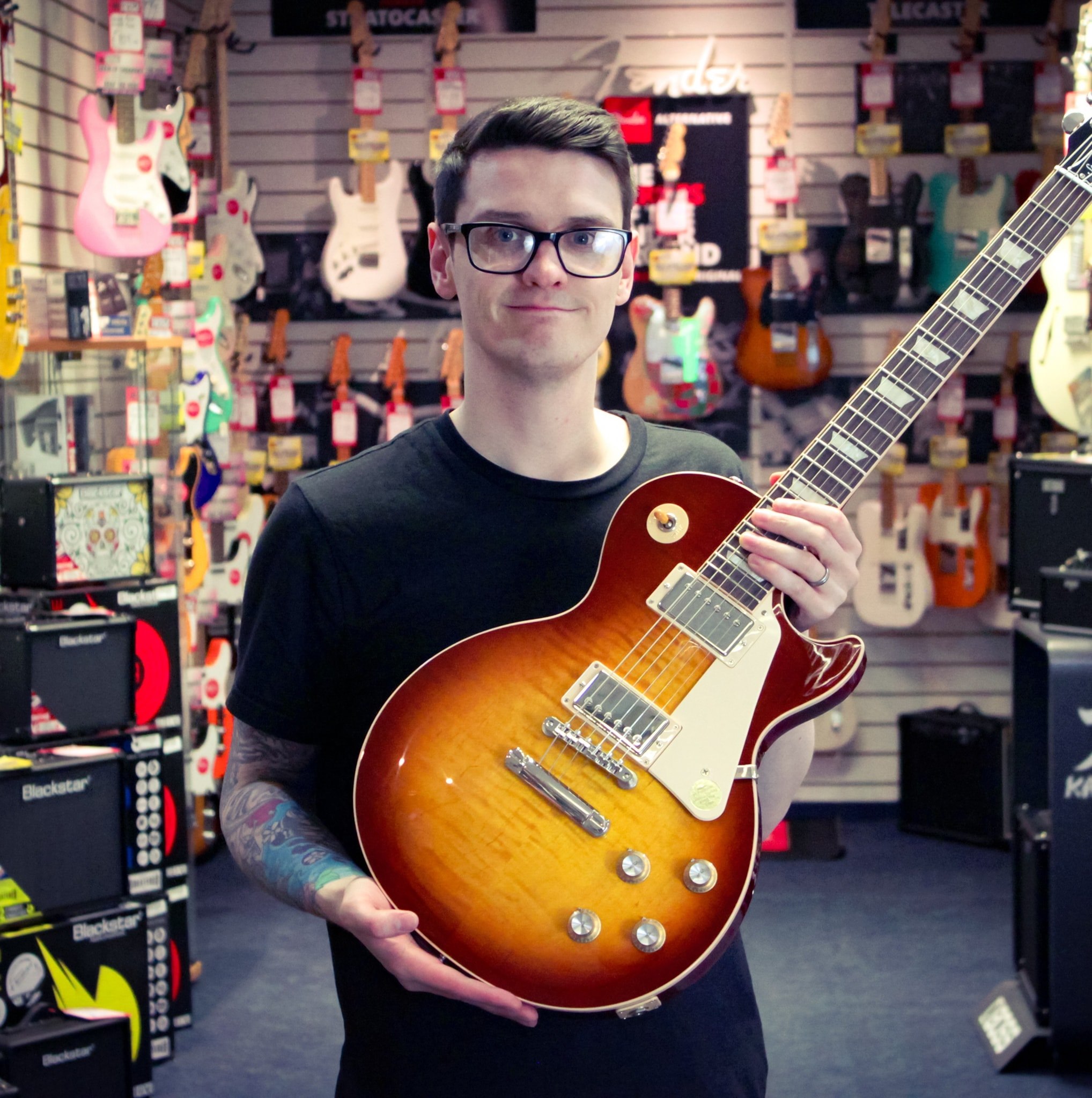
"There's a reason the Vox amPlug has been the go-to headphone amp for many players since they launched in 2007 – they offer a fun practice solution for bedroom players, and they actually sound great. While Vox has refreshed the range for the new generation, they haven't lost the stellar sound and simple design that many loved about the previous iteration. That said, the latest version does lack some of the modern features found on similar units."
Read more: Vox amPlug AC30 review
Best all-in-one
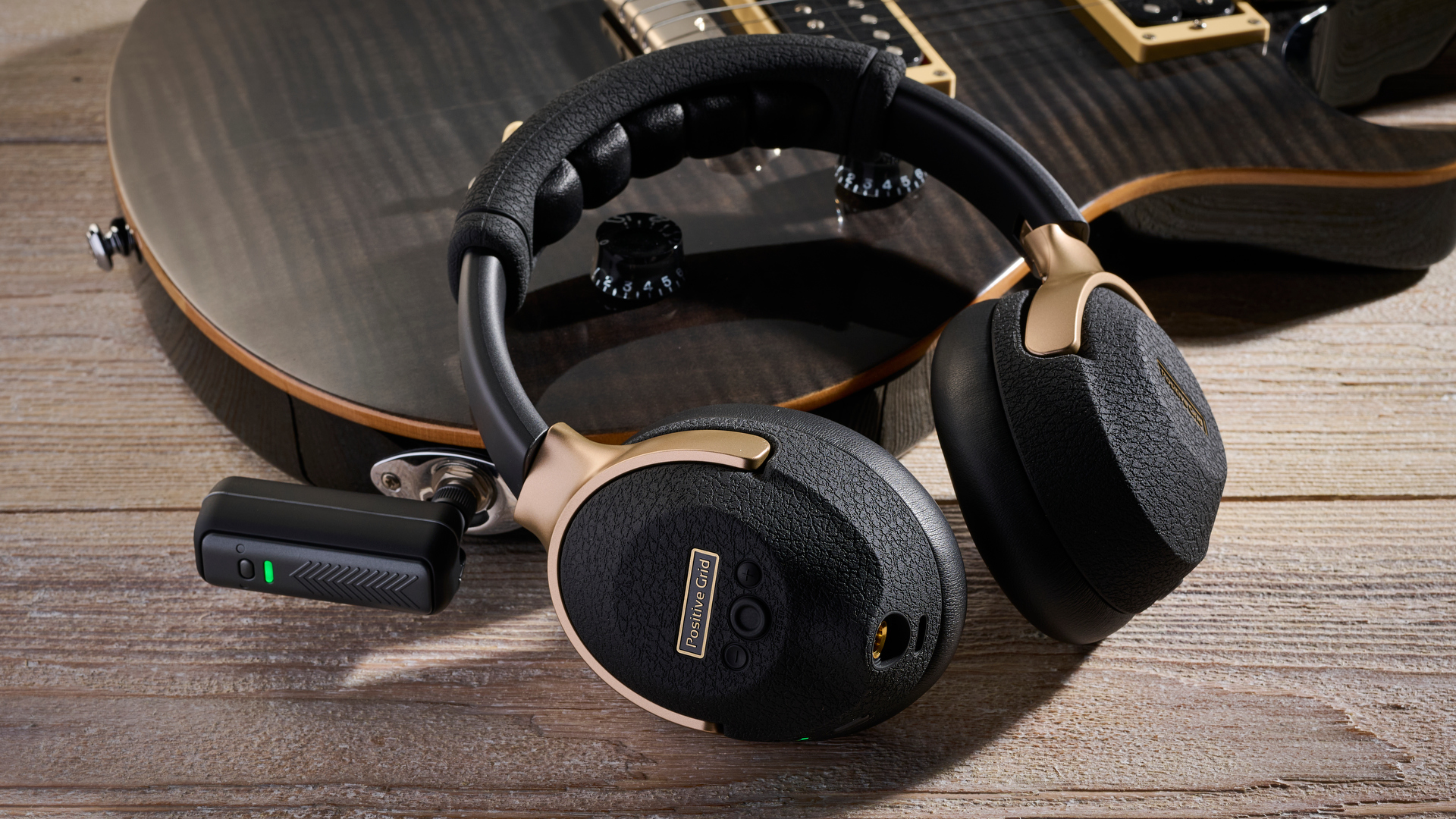
3. Positive Grid Spark Neo
Our expert review:
Specifications
Reasons to buy
Reasons to avoid
✅ Buy if you want an all-in-one practice solution: Combining headphones, amp modeling, and a wireless guitar system, this is the best way to practice your guitar with minimum fuss.
❌ Avoid if you love the Spark practice features: With no SmartJam and video function, existing Spark users might feel the lack of some features is a deal-breaker.
Sounds: ★★★★½
Effects: ★★★★½
Build quality: ★★★★½
Overall: ★★★★½
The Positive Grid Spark Neo is a potentially game-changing product when it comes to silent guitar practice. It walks in the footprints of the Boss Waza-Air in terms of its design ethos, but it offers much more choice at a much more accessible price.
The headphones themselves are very ruggedly built, feeling a little bit like the Tolex of an amplifier on the exterior. I do think it would be nice if PG had included a case for travel though. It also includes a wireless transmitter which goes into your guitar, meaning you can play completely wirelessly. If you run out of battery, you can also plug the cable straight into the headphones, although it's placement is a little awkward.
In terms of tones, it's exactly the same offering as Positive Grid's range of practice amps, which means you've got pretty much any sound you can think of. 43 amp models run from Fender-cleans to Mesa high gain, and there's some dedicated options for bass guitar.
Add in nearly every popular stompbox from fuzz and overdrive pedals to delays and reverbs and you can conjure up a massive range of sounds. There are four hardware presets you can save your favorites to as well if you don't fancy using the smartphone app, accessible via a button on the side of the earcup.

"Throughout my time with the Spark Neo, there was one thing that stood out to me the most, and that’s how ‘immersive’ it is. A large part of this obviously comes down to the headphone-based nature of the product, but this isn’t the same as plugging in a pair of Beats or Airpods to your practice amp."
Read more: Positive Grid Spark Neo review
Best for pedal users
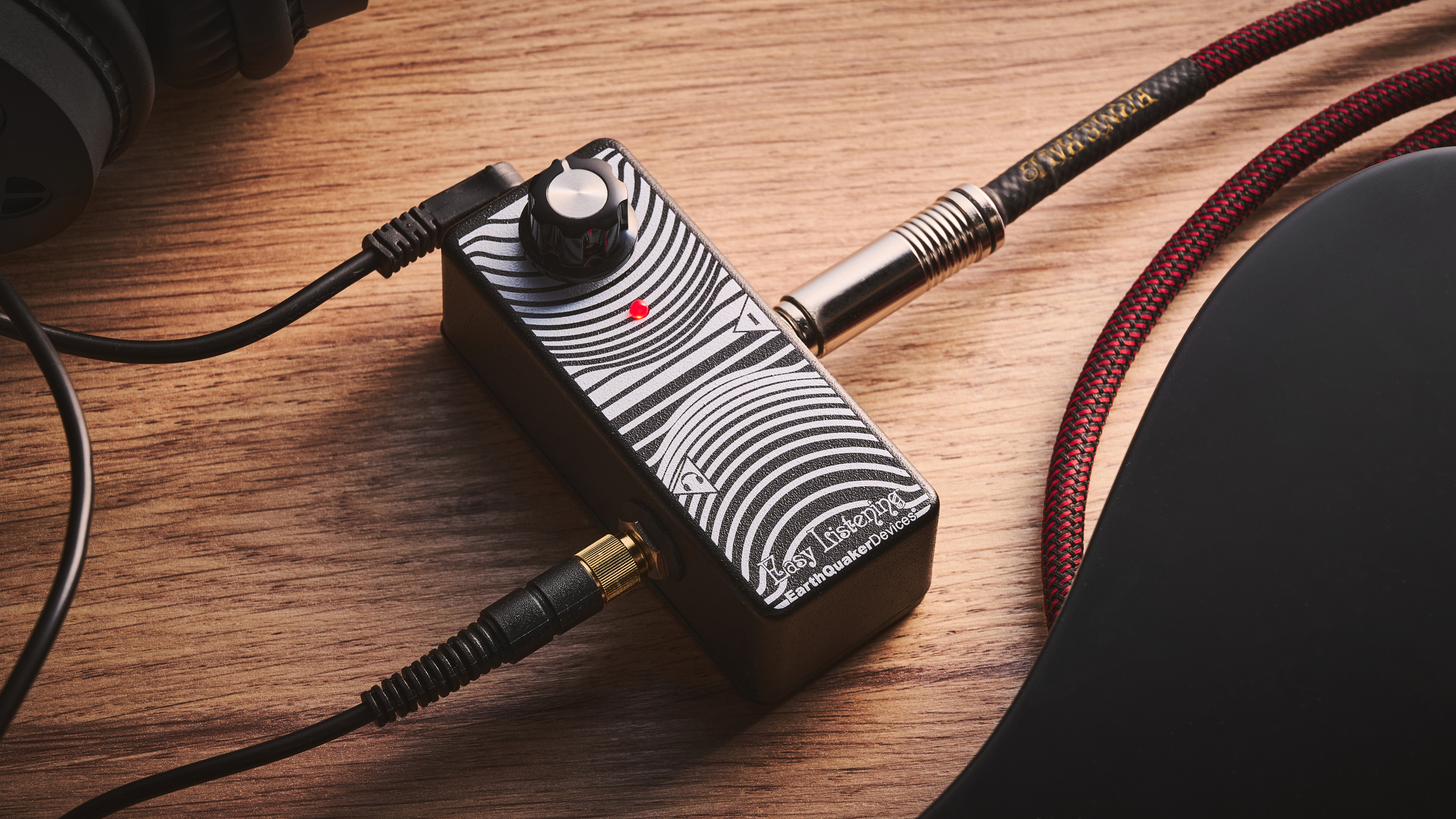
4. Earthquaker Devices Easy Listening
Our expert review:
Specifications
Reasons to buy
Reasons to avoid
✅ Buy if you want to practice with guitar pedals: If they can only pry your pedalboard from your cold, dead hands, this headphone amp for guitar will be perfect for sticking at the end of your chain.
❌ Avoid if you like variety: There's only a single amp tone here and no effects, so unless you already have pedals this likely won't do the job for you.
Sounds: ★★★★☆
Effects: N/A
Build quality: ★★★★½
Overall: ★★★★☆
If you're a player who wants to practice with a pedalboard, then you need to check out the Earthquaker Devices Easy Listening. Designed to replicate a Fender amp tone, it's a perfect pedal platform that lets you plug straight into a great sounding amp with your headphones.
There's just a single knob on the Easy Listening, making it ridiculously simple to use. A single input for your guitar and output for your headphones completes the lineup of connectivity. You can send the headphone out to an interface for recording, and it's powered by a 9V DC power input.
The Easy Listening sounds remarkably like the clean channel of a Fender tube amp, and I found it to be an excellent platform for my own pedalboard. Running multiple gain stages alongside a selection of delays and reverbs during my own testing resulted in some phenomenally good sounds.
It is a bit of one trick pony though, so unless you have guitar pedals or you only crave a single amplifier sound, you could end up finding the Easy Listening a little limiting. It's got a good amount of volume on it though, plenty to drive even high impedance headphones with ease.
Best high-end
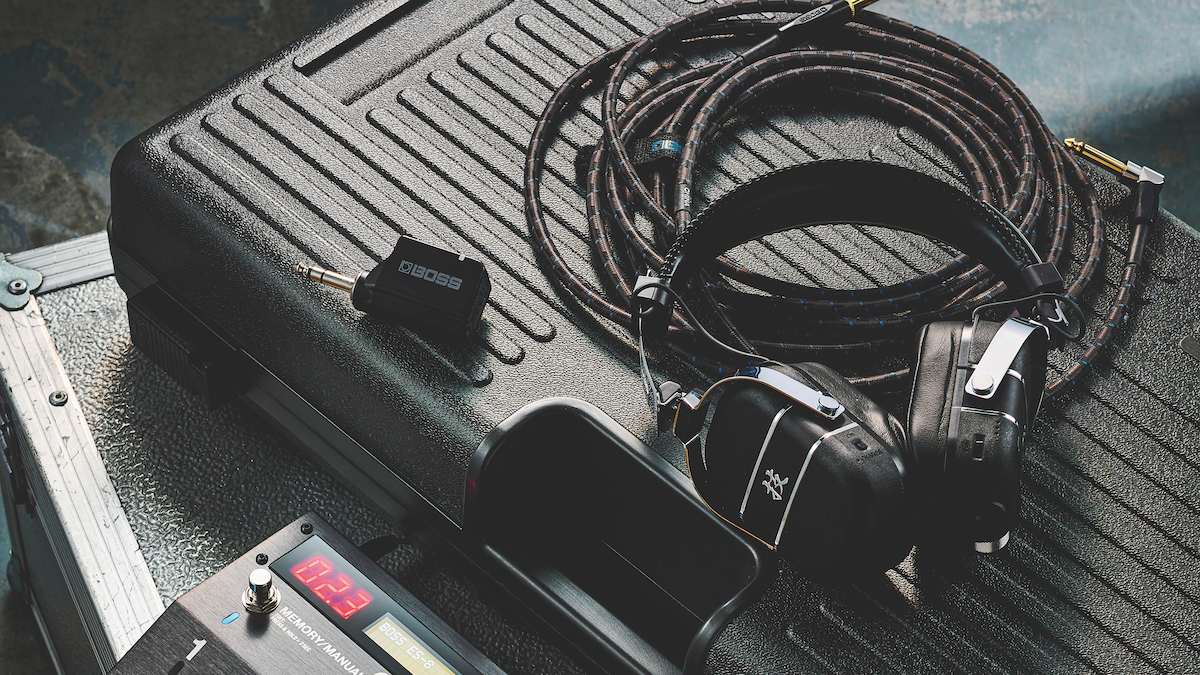
Specifications
Reasons to buy
Reasons to avoid
✅ Buy if you want the best-sounding headphone amp: Smart tech helps deliver unbelievable three-dimensional sound for the most immersive experience outside of using a real amp.
❌ Avoid if you're on a budget: This level of tech doesn't come cheap and makes this by far the priciest option on our list.
Sounds: ★★★★½
Effects: ★★★★★
Build quality: ★★★★½
Overall: ★★★★½
The Boss Waza-Air differs from the others on this list in one rather substantial way – the amplifier is built into the headphones! This game-changing practice tool combines state-of-the-art wireless headphones and the amp models and effects that Boss is renowned for. Throw in Bluetooth audio streaming, and you have a pretty hard-to-beat home practice solution.
Not only does the Waza-Air give you access to five realistic amplifier models as well as 50 customizable effects via the Boss Tone Studio app, but it also boasts spatial technology and an integrated gyro sensor that delivers a unique 3D soundscape.
We found the Waza-Air to be incredibly easy to use, with the buttons being accessible and intuitive. An obvious plus for this stellar headphone amp is the lack of cables. The wireless nature means you won’t get tangled up when you are trying to nail that tricky new solo.
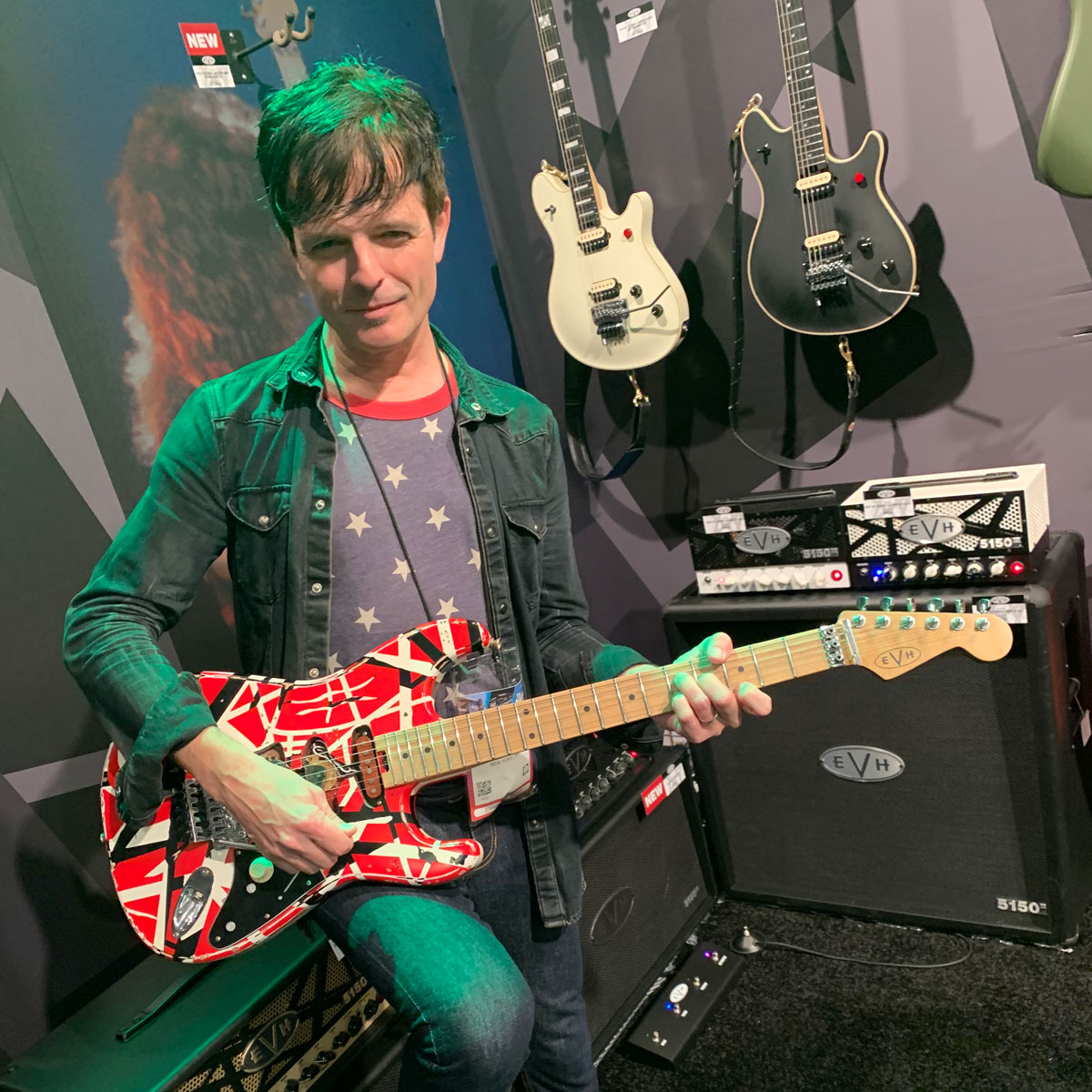
"The Waza-Air setup changes the game for the practice setup, with a wireless headphones system that offers three-dimensional sound, and a cornucopia of amp models and effects plus Bluetooth audio streaming. It might well be the most portable and finest practice solution ever."
Read more: Boss Waza-Air review
Best for bass
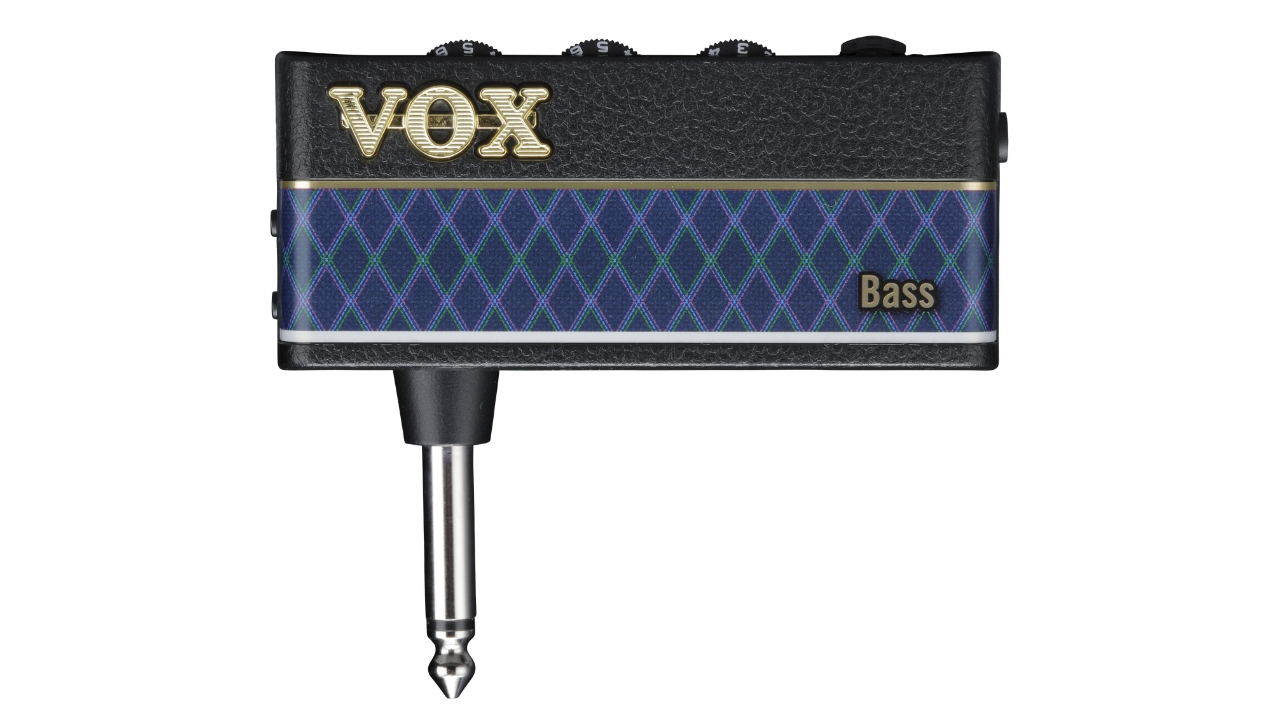
6. Vox amPlug 3 Bass
Our expert review:
Specifications
Reasons to buy
Reasons to avoid
✅ Buy if you want to practice your bass: Being specifically designed for bass guitarists makes this a standout for honing your grooves at home.
❌ Avoid if you don't play bass: This one doesn't sound great with anything other than a bass guitar, so get something more versatile or specific unless you're only playing bass guitar with it.
Sounds: ★★★★
Effects: ★★★½
Build quality: ★★★★
Overall: ★★★★
With so few options dedicated to bass guitar players, it's hard to knock the Vox amPlug 3 Bass for what it does. It's simple and to the point, but if you need to practice your bass guitar silently or on the go, it's undoubtedly the best option out there right now.
There are two channels and three effects built into the amPlug 3 Bass, so you don't get a huge selection of sounds, but what is there is absolutely fine for home practice. Channel 1 gives you a classic clean tone, while channel 2 offers some grind by adding driven tones into the mix. The three effects include compression, reverb, delay, and chorus so you can spice your practice up too.
Included drum beats allow you to practice with a groove, and there's a metronome only option with tap tempo for setting your speed. It's a super option to have all in one, and save you having to connect an additional device for jamming. It's great value for money, and absolutely the best option for practicing bass guitar silently.
Spec comparison
Here you can do a direct comparison of each of our top picks using their key features. This will help you narrow down what the right solution is for you if you're struggling to decide between certain models:
Model | Amps | Effects | Rechargeable? | Flex Input? |
|---|---|---|---|---|
Fender Mustang Micro Plus | 25 | 25 | Yes | Yes |
Vox amPlug 3 AC30 | 1 | 4 | No | Yes |
Positive Grid Spark Neo | 43 | 33 | Yes | Yes |
Earthquaker Devices Easy Listening | 1 | N/A | No | No |
Boss Waza-Air | 5 | 50 | Yes | Yes |
Vox amPlug 3 Bass | 2 | 3 | No | Yes |
Also consider

7. Electro Harmonix Headphone Amp
Our expert review:
Specifications
Reasons to buy
Reasons to avoid
✅ Buy if you want a silent pedal platform: This amp is deliberately simple to let your pedals of choice do the talking, letting you practice with your pedals.
❌ Avoid if you don't have any pedals: There are no built-in effects and only one sound, so you need stompboxes to really bring this headphone amp to life.
Sounds: ★★★★½
Effects: N/A
Build quality: ★★★★★
Overall: ★★★★½
Electro Harmonix’s headphone amp for guitar is a typically no-nonsense offering from the New York-based guitar pedal giant. Featuring just one knob, an input and a headphone out, it lets you get straight down to business with minimal fuss.
Coming from a behemoth of the FX pedal world, it’s no surprise to discover that the EHX headphone amp is designed to be a great pedal platform, offering a fantastic base clean tone that takes fuzzes, distortions, reverbs, delays, and anything else you can throw at it.
It features a handy belt clip should you want to go for a wander whilst noodling your favorite riffs or practicing scales. Unlike some others on this list, it doesn’t plug straight into your guitar, so you’ll need an additional cable to get up and running.
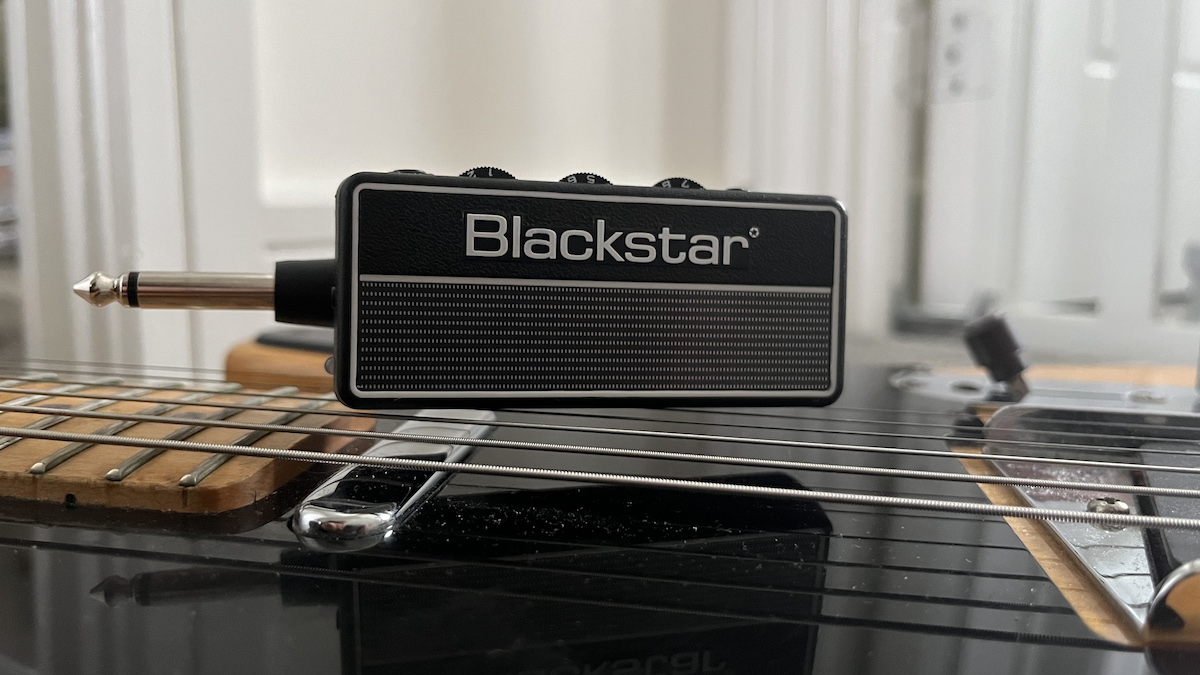
Specifications
Reasons to buy
Reasons to avoid
✅ Buy if you want high gain... and more: There's a dedicated headphone amp for heavier styles elsewhere in this guide, but this Blackstar amp does high gain very well, in addition to a host of other great tones.
❌ Avoid if you want a rechargeable battery: Like others in this guide, you'll need to fuel your amp with AAA batteries, so you'll need to factor that into the running cost.
Sounds: ★★★★½
Effects: ★★★★
Build quality: ★★★★
Overall: ★★★★½
Blackstar’s amPlug Fly is built on the same architecture as the Vox amPlug, which is actually designed by Korg (stay with us here). So when you initially pick it up it looks and feels exactly the same as Vox’s offering, just with different branding.
Like the Vox amPlug, there are three rotary controls and a button for switching on/off and selecting your channel. On the clean setting, there’s a surprising warmth and depth of tone considering its diminutive dimensions. Add some of the effects and you get a very 3D sound filling your headphones.
It also handles higher gain settings very well, with a powerful distortion that doesn’t sound tinny in the slightest. Blackstar’s famed ISF control gives you the power to switch from an American amp tone to a British one.

"This is a great-sounding headphone amp that covers a massive range of tones, making it the perfect silent practice tool. With three channels and three effects, you can cover pretty much any playing style."
Read more: Blackstar amPlug 2 FLY review
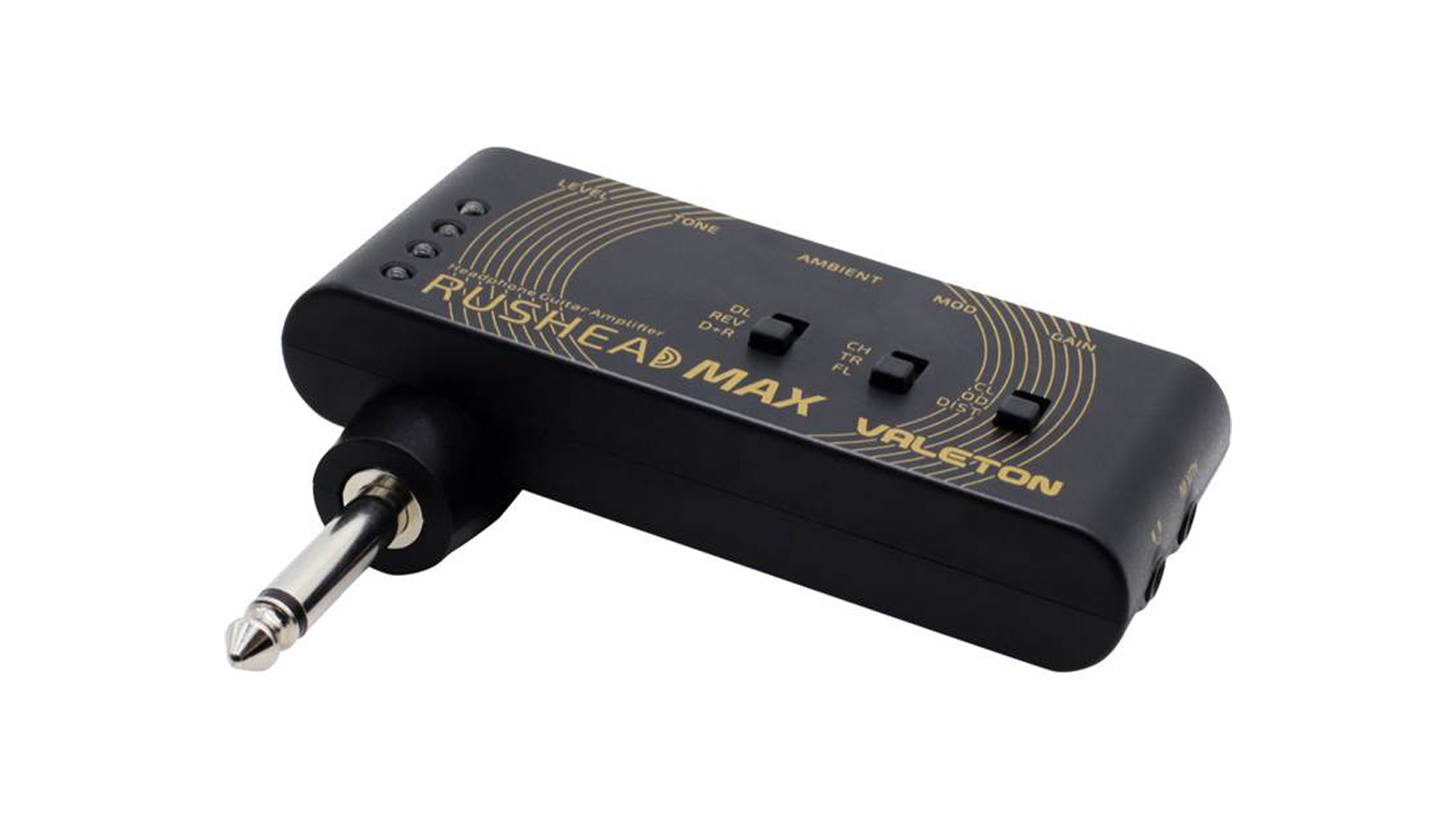
9. Valeton Rushead Max
Our expert review:
Specifications
Reasons to buy
Reasons to avoid
✅ Buy if you have a small budget: If you want a no frills, plug and play headphone amp that doesn't cost the earth, the Valeton is the ideal choice.
❌ Avoid if you wat a compact amp: There's no folding jack so it's not so easy to stow in a gigbag pocket.
Sounds: ★★★★
Effects: ★★★½
Build quality: ★★★★
Overall: ★★★★
The Valeton Rushead Max comes from a company that makes lots of famous pedal clones, meaning you’re getting great guitar tones for a very low price. It’s rechargeable via USB, so no repeat buying of batteries is necessary here.
Three switches on the front face of the Rushead Max give you three amp sounds, with a classic Fender clean sound, Marshall-type crunch, and high gain distortion for getting heavy. Combining these settings with tone and gain knobs gives you plenty of scope for sculpting.
Effects-wise we’ve got classic Delay and Reverb settings that go from simple slap-back to vast, celestial sound spaces. Alongside this, you can dial in some warm chorus sounds, tremolo, and a flanger, making the Rushead Max extremely flexible.
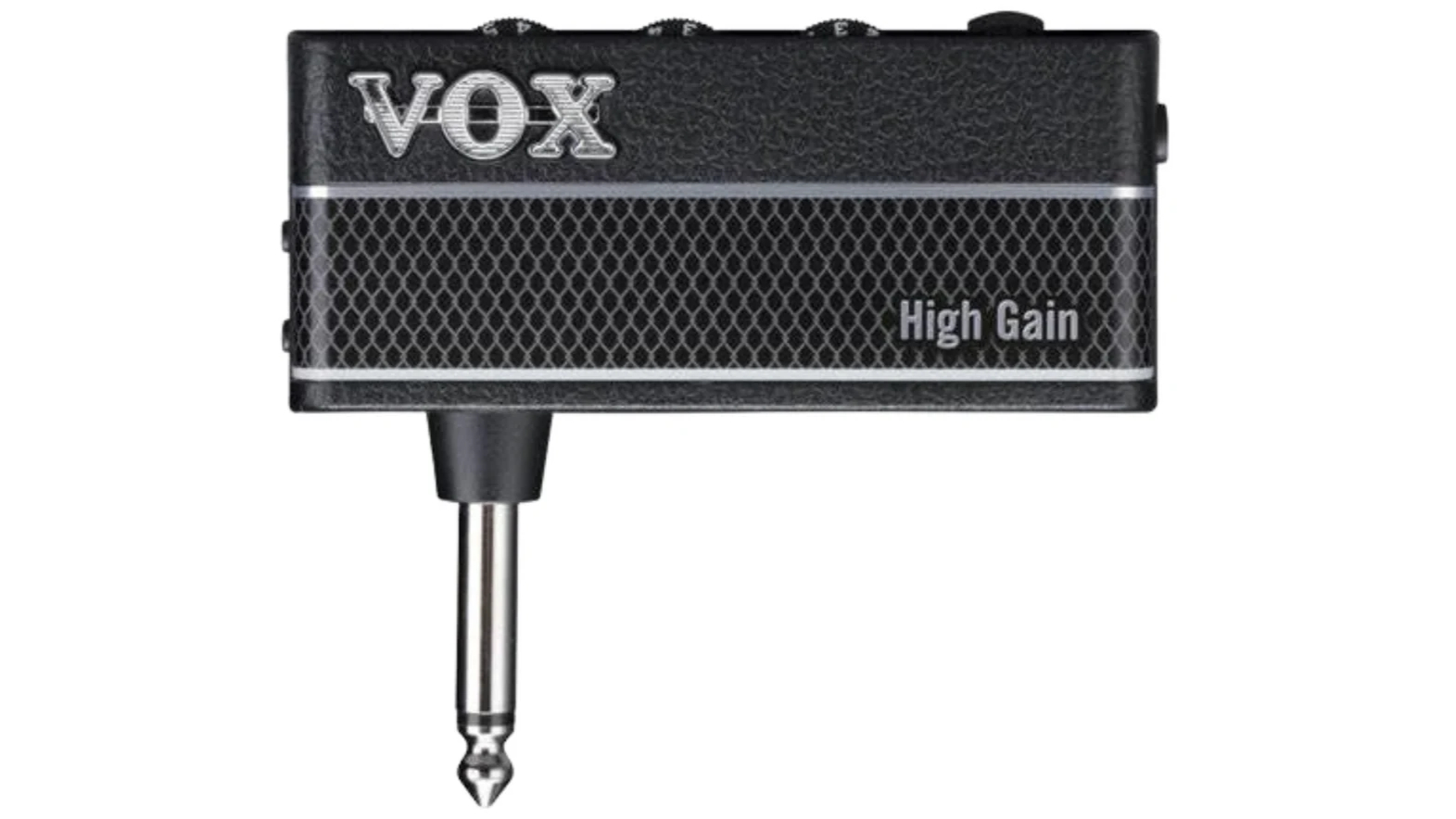
10. Vox amPlug 3 High Gain
Our expert review:
Specifications
Reasons to buy
Reasons to avoid
✅ Buy if you're a metalhead: This amp has a very clear use case, so if you want to shred through the night, this is for you.
❌ Avoid if you need Bluetooth: Unfortunately, this device doesn't include Bluetooth connectivity.
Sounds: ★★★★
Effects: ★★★½
Build quality: ★★★★
Overall: ★★★★
Yep, it’s another Vox amPlug! This particular model is designed for players who want crushing distortion sounds for heavier styles, and it's great for those late-night chugging sessions.
As with all the Vox amPlug series, the construction is the same, with your gain, volume, and tone controls, nine effects, plus a line out for jamming along with your preferred device. With up to 17 hours of playing time, it’s got plenty of juice to keep you going.
The sound is what you’d expect from the name – crushing high gain sounds abound here. It’s modeled on American-style high gain amps and it pairs great with humbucker-equipped guitars and dropped tunings. If you’re an extended-range guitar player you’ll love this as a practice tool.

"Tonally, there's a lot to like about the new generation of Vox amPlug. From gut-punching riffs to searing leads, this high-gain headphone amp is ideal for recreating the tones found on modern metal records. If we were to nit-pick, we would prefer to see a few more modern features added to the device, such as USB charging and Bluetooth audio, but at an incredibly affordable $49.99, it can't be denied that Vox is offering outstanding value for money.
Read more: Vox amPlug3 High Gain review

11. Sonicake US Classic
Our expert review:
Specifications
Reasons to buy
Reasons to avoid
✅ Buy if you want a rechargeable battery: This amp's built-in battery will deliver up to 5 hours of playtime.
❌ Avoid if you want to crank it: We found it broke up once we hit higher volumes.
Sounds: ★★★★
Effects: ★★★★
Build quality: ★★★★
Overall: ★★★★
If you prefer your amp sounds of the Tweed-covered variety, then the Sonicake US Classic is the one for you. Emulating that much-loved tone very well, this headphone amp for guitar offers simple usability to get you up and playing quickly.
Featuring a built-in rechargeable battery, you can get around 5 hours of playtime on a single charge, more than enough to last you a few practice sessions over a week. The Aux In is great for practicing with recordings or a metronome.
It goes from warm clean tones all the way to deliciously crunchy overdrive, making it a versatile practice tool for a variety of styles. The built-in reverb allows you to add some space to your sound, great for a clean sound and lead guitar licks.
How to choose
There are a number of factors to consider when shopping for the best headphone amp for guitar.
1. User Interface
You can trust Guitar World
One of the first things you might think about is how the unit is controlled and laid out.
Units like the AmPlug series are really easy to use – all the sounds are dialled in using traditional knobs and buttons. If you want to get going quick and you prefer a simpler layout then these are perfect.
Other units might be a little more complicated to use, but they tend to offer more tonal possibilities. Some have menus on board, so you’ll need to navigate that via whatever interface it has. There might even be the option to control the sounds from your phone or tablet too.
2. Sound
Of course, what kind of sound you want out of your headphone amp will help determine which model you go for. Modeling headphone amps like the Fender Mustang Micro Plus and Boss Waza-Air can cover any style of music. So, if you want a wide range of tones to play around with then one of these will be ideal.
Some headphone amps concentrate on nailing the sound of one particular amp, or styles of amp. The Vox AmPlug AC30 aims to give you the sound of – you guessed it – a Vox AC30 all through your headphones.
3. Effects
Do you need a headphone amp that has effects on board or can you live without them? This may help determine which amp you choose too. Some might have a couple of effects, like reverb and delay; some might not have anything at all. Other units (usually modeling amps) will likely have a wider range of effects including modulations, overdrives and more, so if you want to get experimental without having to add in external pedals, then you know what to look for.
4. Cost
Think about how you might use a headphone amp. Are you looking to invest in a serious practice tool, or are you after one for more of a novelty to use now and again?
If it’s the former, then it really is worth spending as much as you can afford on one. You’ll get better quality sounds, which will make you want to play more. You’ll likely get something with a higher build quality, therefore increased longevity too.
Higher end modeling headphone amps allow you to dial in loads of different sounds too, so as you advance and evolve as a player, your headphone amp will constantly be able to provide you with a plethora of tones to keep up.
Of course, if you’re seeing a headphone amp as something you’ll only use occasionally, then you’ll find that many options on this list are really affordable but will still provide you with everything you need.
Glossary
Modeling
Modeling amps aim to replicate the sound and response you’d get from certain other specific amps, usually tube amps. Many of them let you choose from a wide range so are really versatile – you can go from a clean Fender-style amp to a super distorted modded Marshall, for example.
Analog
Unlike modeling amps which use digital processors, analog amps retain the analog signal produced by your guitar. It’s not that either one is better per se; it’s more about personal preference. You can do more with digital amps, but some like the more traditional sound and response of analog.
Latency
In this context, latency is the difference in time between you playing a note on your guitar and then hearing it through your headphones. When you play through any set-up, there’s usually some tiny level of latency, but your ears can’t detect it, so it’s not an issue.
As soon as your ears pick up on latency (i.e. the time between striking the string and hearing it), it can be incredibly off-putting – it’s essentially unusable. All the options on this list have super low latency – you won’t notice it at all, so no issue, however you’ll probably want to avoid using wireless headphones.
Rechargeable battery
Here, rechargeable battery will refer to the headphone amp itself having a self-contained battery that you plug in and recharge, usually via USB. Others will be powered with separate batteries that you insert; likely AA or AAA (the rechargeable ones that you plug into a device are fine too).
FAQs
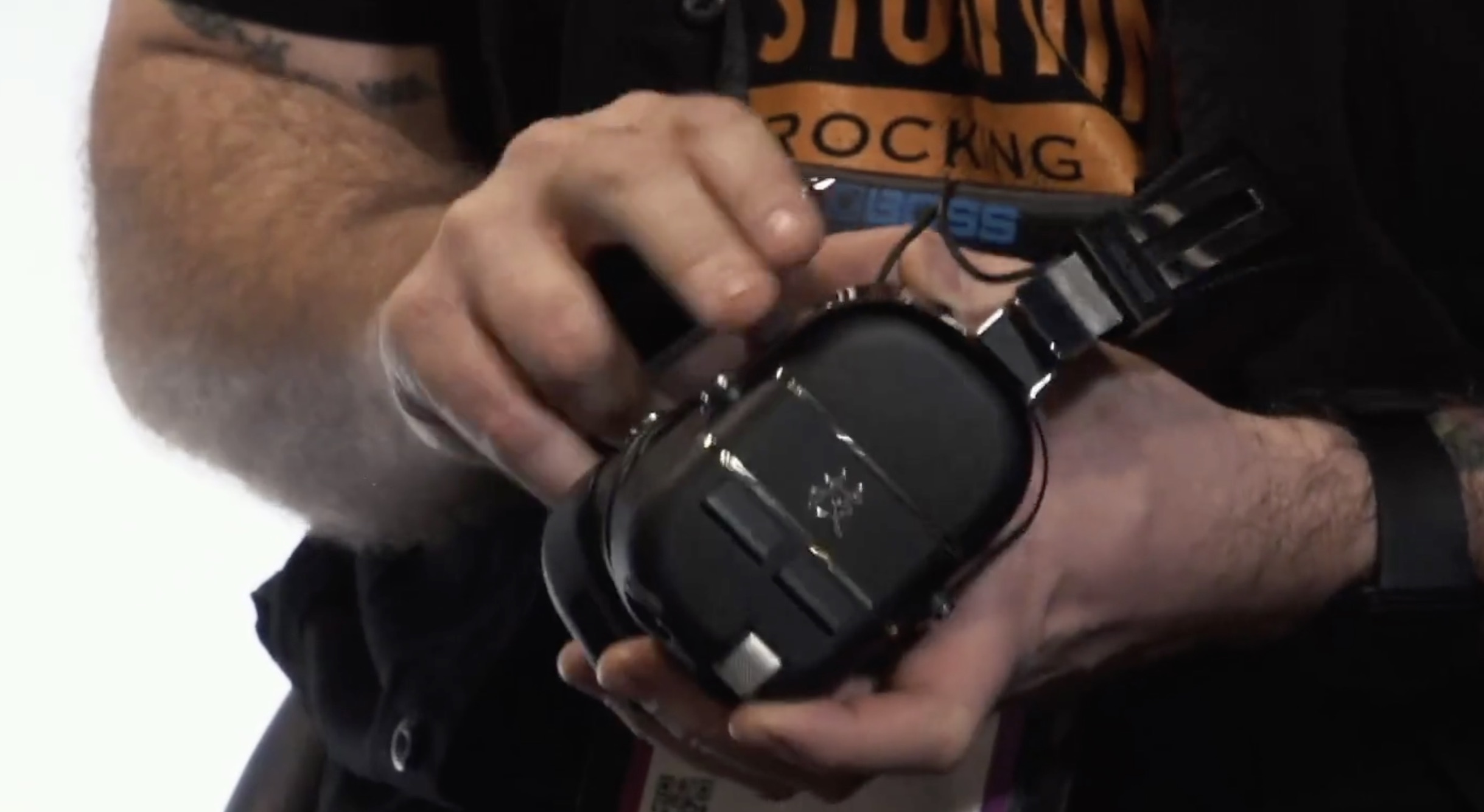
Can I use a bass with the a headphone amp for guitar?
The short answer is yes, you can. However, doing so might not yield the best results with some models. These amps have been voiced for a guitar’s frequency range, so you’ll likely get more top-end than you’d like, and not enough low-end.
There are units out there designed specifically for bass, in fact there are bass versions of the Boss Waza-Air and Vox AmPlug. These will give you a bigger, bassier sound more suited to the frequency range that the instrument occupies.
Do I need to use certain headphones with it?
You don’t need any particular type of headphones, but you’ll want to stay away from wireless Bluetooth headphones as these are more likely to cause latency issues. Using traditional wired headphones will mean that you hear what you play instantly, as opposed to there being a slight delay.
Can I use a headphone amp for recording?
The answer to this depends on the model itself. The more traditional units like the AmPlugs are designed just for use with headphones. While you can take the jack output from the headphone amp and take it to a recording interface, it won’t sound great.
Many of the digital models that feature a USB slot do have recording functionality. You can plug straight into your computer or device without the need for an interface and record directly.
If this is a feature that you know you want, then look for a digital headphone amp with USB connectivity.
What's the difference between a headphone amp and a guitar amp with headphone output?
Firstly, a regular amp with a headphone output will probably be much bigger. It houses a speaker so you’ve got the additional weight and size factors associated with that.
Headphone amps obviously don’t have a speaker built in to them. They have been designed to be compact and light, plus they operate on batteries which means they’re much more portable.
All in all, it’s these things that make the best headphone amps the perfect practice tool to use anywhere and everywhere.
Do headphone amps require batteries?
Again, this is model-dependent. Some units operate on batteries, though you’ll find that many do come with a set included so you can get playing as soon as it arrives (worth checking in advance though).
Others might have a rechargeable battery so there won’t be any additional cost along the way – you’ll just have to remember to charge it up regularly.
Can I use pedals with a headphone amp?
There’s nothing stopping you using a headphone amp with pedals. It effectively works as a regular amp, so you’d plug the amp into the output of your last pedal and run your headphones from there – just make sure your cable is long enough.
It’s also worth noting that a headphone amp won’t react to pedals in the same way as a regular guitar amp. The speaker plays a large part in the sound you hear from an amp and pedals can really help drive that. If you’re also used to using a tube amp, then a headphone won’t break up in the same way when pushed.
So yes, it’s possible, but not all of them have been designed with that in mind.
How we test
Here at Guitar World, we are experts in our field, with many years of playing and product testing between us. We live and breathe everything guitar related, and we draw on this knowledge and experience of using products in live, recording and rehearsal scenarios when selecting the products for our guides.
When choosing what we believe to be the best headphone amps for guitar available right now, we combine our hands-on experience, user reviews and testimonies and engage in lengthy discussions with our editorial colleagues to reach a consensus about the top products in any given category.
First and foremost, we are guitarists, and we want other players to find the right product for them. So we take into careful consideration everything from budget to feature set, ease of use and durability to come up with a list of what we can safely say are the best headphone amps for guitar on the market right now.
Read more about our rating system, how we choose the gear we feature, and exactly how we test each product.
Why you can trust us
☑️ A global audience of 3.8 million guitarists monthly
☑️ 1,200+ reviews on GuitarWorld.com
☑️ 30+ years of product testing at Guitar World
Guitar World boasts more than 44 years of expertise and stands as the ultimate authority on all things related to guitars. The magazine and website feature expertly written gear round-ups and top-quality, authoritative reviews penned by a team of highly experienced industry professionals.
Guitar World's inaugural print issue hit the shelves in July 1980, and ever since, it has been captivating players and enthusiasts with engaging lessons, insightful interviews with the biggest guitar heroes, and priceless buying advice for newbie players.
Furthermore, GuitarWorld.com continues this legacy online and serves as the hub of the world's foremost authorities on guitar playing. The site not only hosts content from Guitar World but also showcases articles from respected publications such as Guitarist, Total Guitar, Guitar Techniques, and Bass Player. With a reach extending to 3.8 million players each month, GuitarWorld.com is a go-to destination for guitar fanatics globally.
Meet the experts

Matt is a Junior Deals Writer here at Guitar World. He regularly tests and reviews music gear with a focus on guitars, amps, pedals, modelers, and pretty much anything else guitar-related. Responsible for over 60 buying guides, a large part of his role is helping guitarists find the best deals on gear. Matt worked in music retail for 5 years at Dawsons Music and Northwest Guitars and has written for various music sites including MusicRadar, Guitar Player, Guitar.com, Ultimate Guitar, and Thomann’s t.blog.

After spending a decade in music retail, Richard is now a freelance writer for MusicRadar, Guitar Player, Guitar World and Reverb, specialising in electric and acoustic guitars, bass, and almost anything else you can make a tune with. When his head’s not buried in the best of modern and vintage gear, Richard runs a small company helping musicians with songwriting, production and performance, and plays bass in an alt-rock band. Otherwise, you'll probably find him out walking the dog!
Latest updates
19/11/25: Two new products have been added, with the Positive Grid Spark Neo and Earthquaker Devices Easy Listening finding top picks spots in the guide after recent reviews. The how to choose section has been reformatted to make it easier to read, and a fresh introduction has been written.
17/07/25: The guide now has expert verdict panels on products where applicable. A new glossary explaining key terms is now included, while the FAQ section has been completely overhauled to help you make an informed decision when purchasing a headphone amp for your guitar. In addition, a new section detailing how to choose a headphone amp has been included, along with a section explaining why you can trust the Guitar World team. Finally, we've added a meet the experts panel so you can get to know the faces behind the names.
Read more
- Best headphones for guitar amps: practice in peace
- Best guitar VSTs: transform your home recordings
- Best DAWs for guitarists: guitar-friendly music-making software
All the latest guitar news, interviews, lessons, reviews, deals and more, direct to your inbox!

Matt is a Junior Deals Writer here at Guitar World. He regularly tests and reviews music gear with a focus on guitars, amps, pedals, modelers, and pretty much anything else guitar-related. Matt worked in music retail for 5 years at Dawsons Music and Northwest Guitars and has written for various music sites including MusicRadar, Guitar Player, Guitar.com, Ultimate Guitar, and Thomann’s t.blog. A regularly gigging guitarist with over 20 years of experience playing live and writing and recording in bands, he's performed everything from jazz to djent, gigging all over the country in more dingy venues than you can shake a drop-tuned guitar at.
